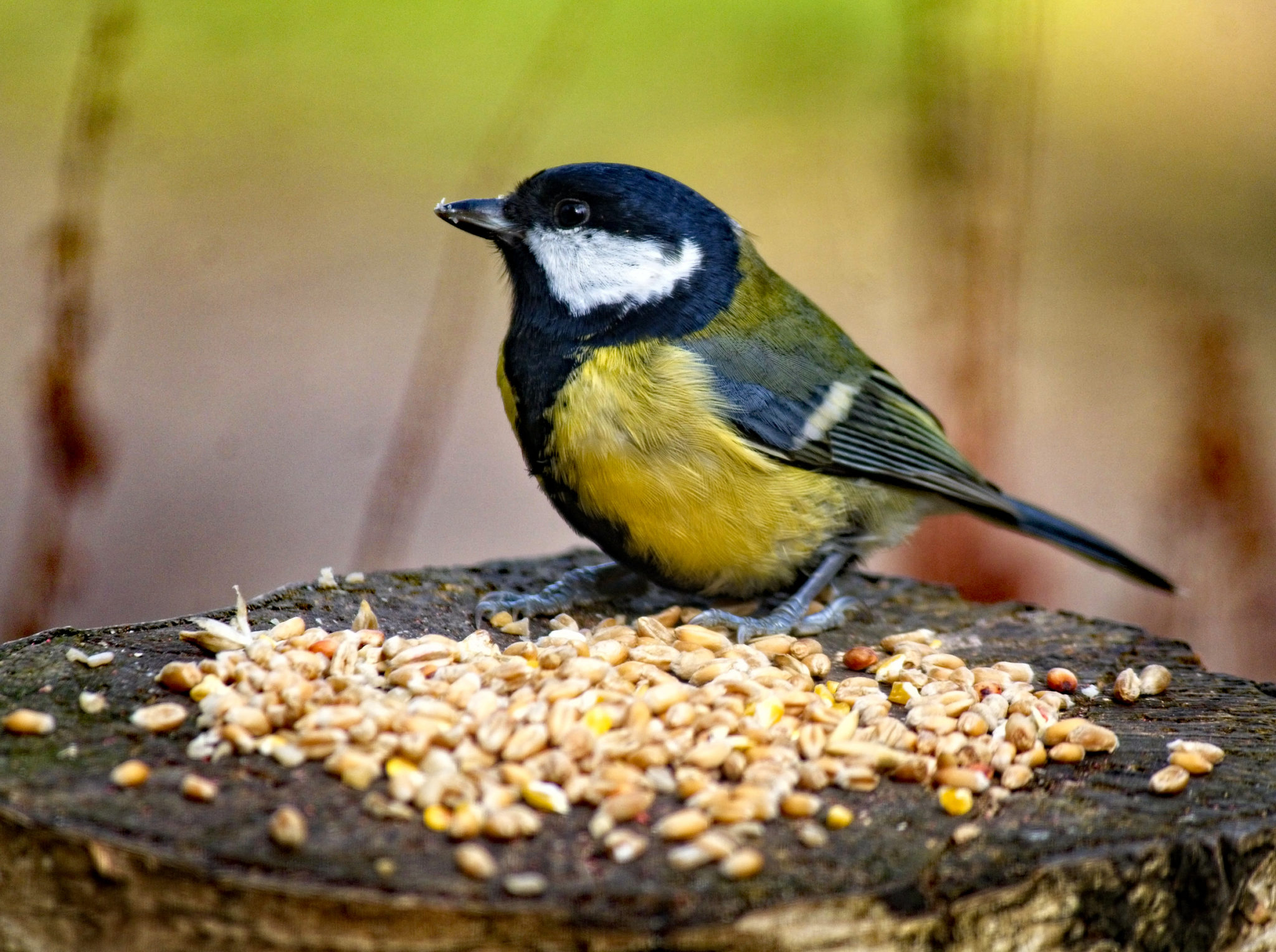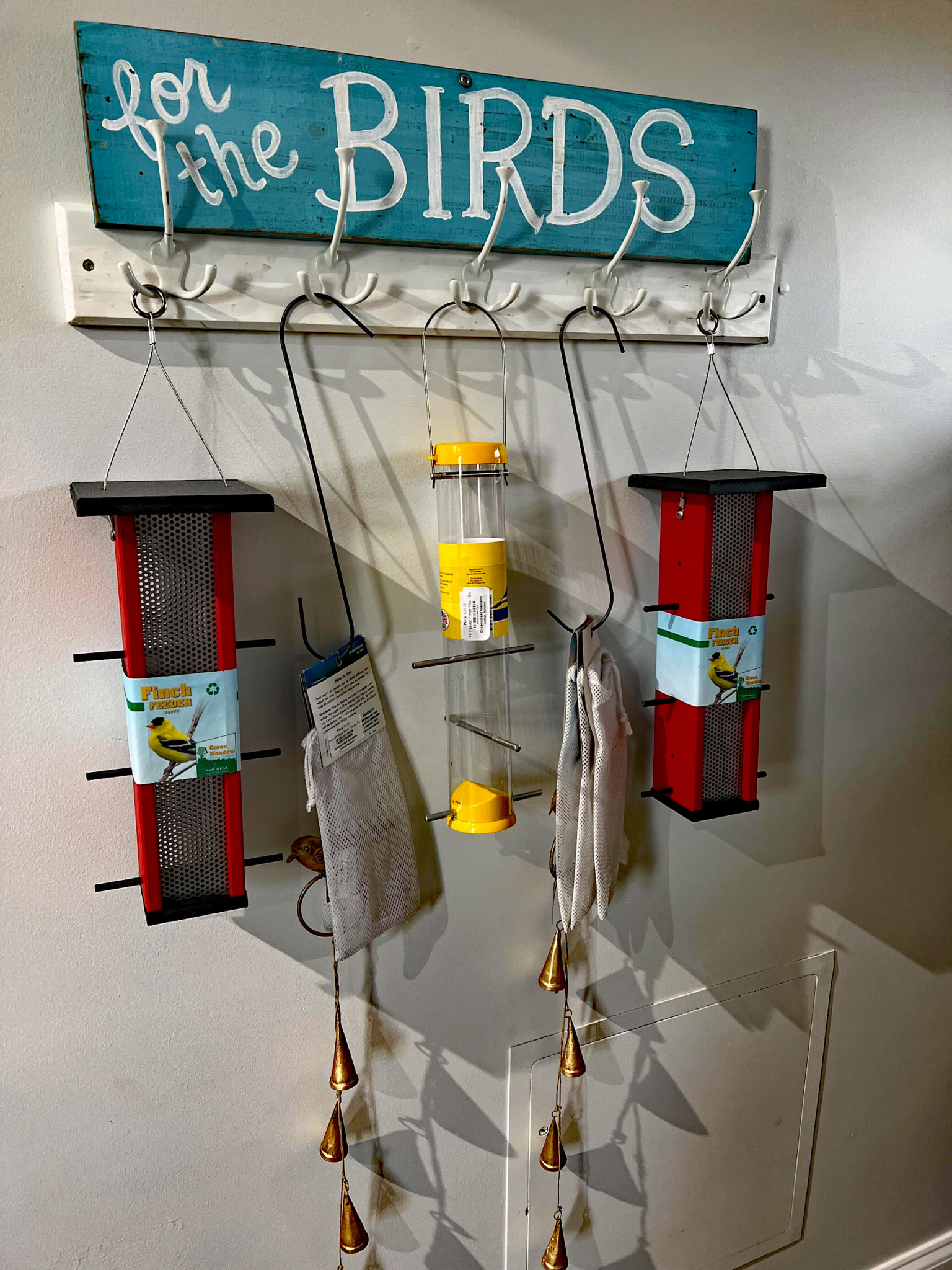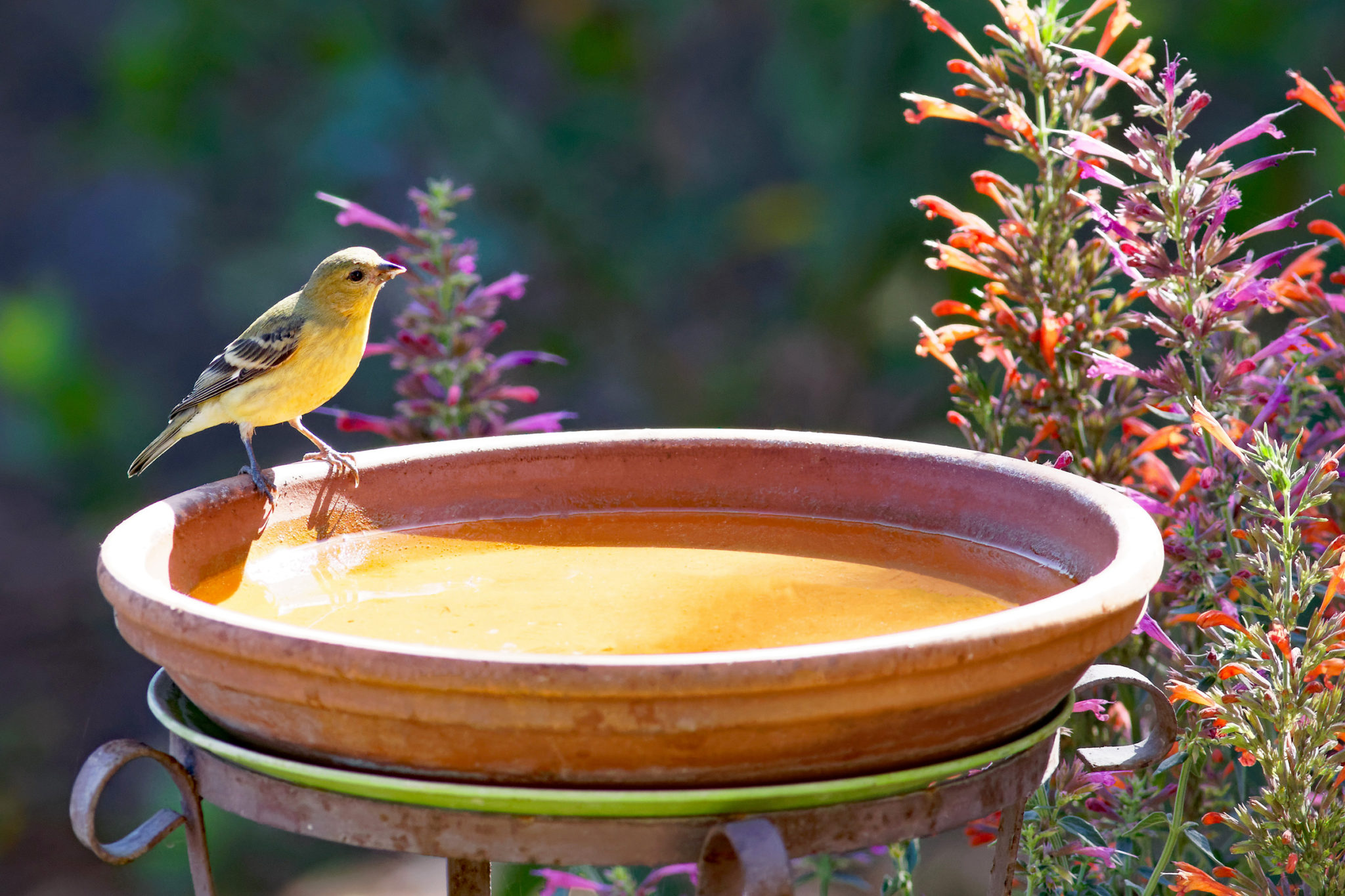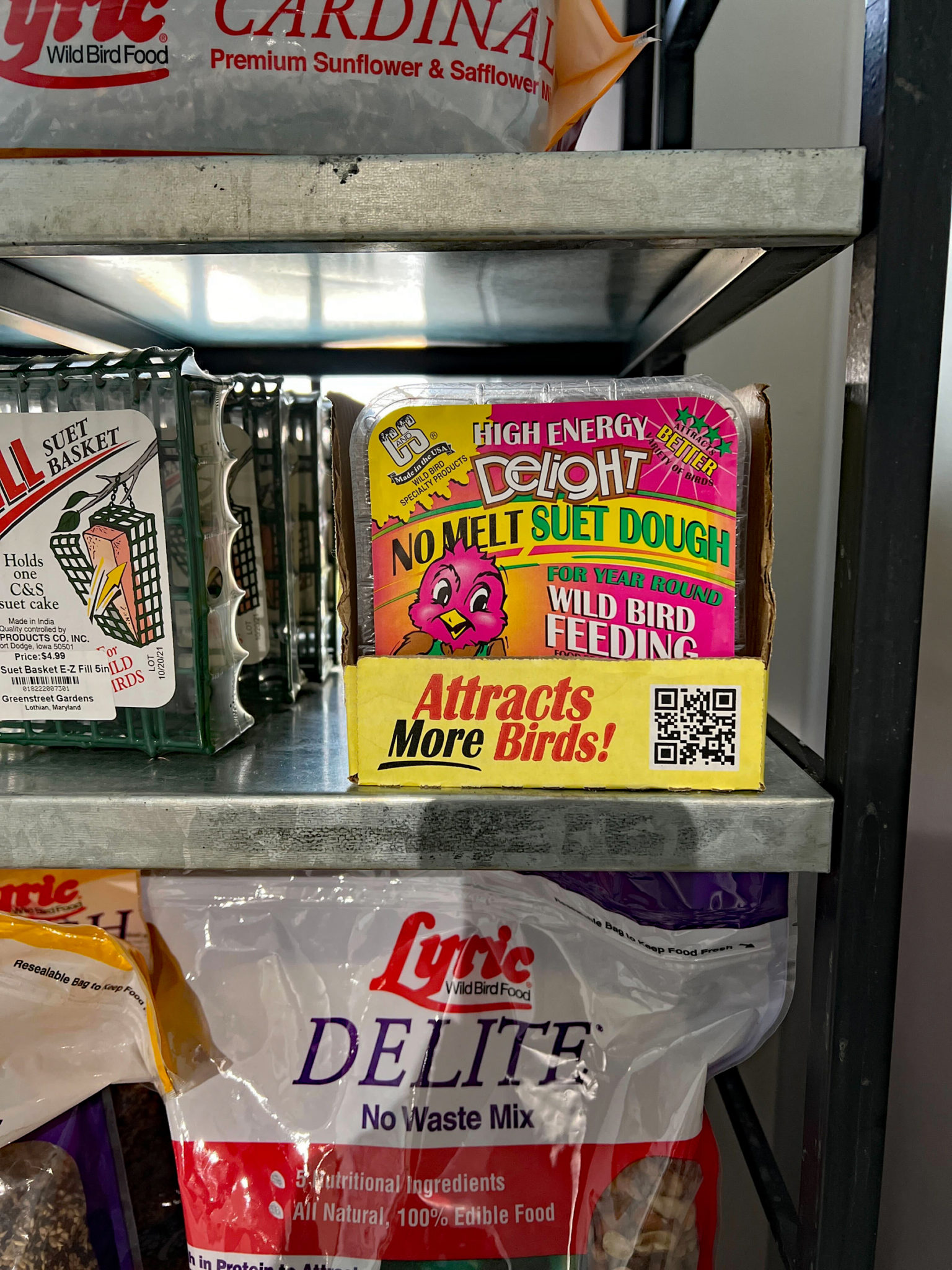How to Attract Birds to Your Garden

Alexandria, VA – The beauty of a garden is in its layers of sights, sounds, textures, movement, and scents. Birds embody some of the garden’s best features with colorful feathers, diverse shapes, and soothing voices.
Songbirds in Maryland and Virginia fall into three basic groups. Some are year-round residents who remain in the neighborhood, knowing that an ample supply of natural seed stocks will be available throughout the winter. Others are northern visitors who fly south each winter to seek more dependable food supplies. The rest are the “passers-by”; birds that pass through on their migratory route while headed farther north or south.

Like you, birds are warm-blooded animals and must maintain their body temperatures. Feathers provide essential insulation. Some species use communal roosting spots to share collective warmth at night. Black-capped chickadees enter a form of semi-hibernation, which reduces their heartbeat, respiration, and body temperature on the coldest of nights. Even with these natural adaptations, many local songbirds depend on our bird-friendly gardens to survive.
You can do a lot to foster a bird-friendly environment in your yard. You can attract birds by planting seed-bearing perennials, shrubs, and trees. You can offer them food and shelter by providing birdhouses and feeders. Finally, with a simple birdbath, you can give birds a place to drink and bathe while adding personality to your garden decor. However you would like to welcome your feathered neighbors, there are plenty of options.

Wild birds spend a lot of time searching for dependable supplies of nutrition. Start with a premium bird seed; for most birds, seeds are an essential source of high energy, which is extremely important for our feathered friends in the colder months. Once you start providing food, the local birds will make your feeders a daily stop as they forage through the neighborhood. Keep a winter table set for them, and they will provide hours of enjoyment.
Under normal circumstances, birds try not to become dependent on one household. If you cannot fill the feeders for a day or two, the birds will adjust and substitute other sources until you can re-stock. However, the opposite can also occur. Occasionally, the native food sources can become unavailable to local birds after heavy snowfalls or ice storms. In these circumstances, they may depend on your feeders to survive. When winter is at its worst, keep your feeders stocked.
Like the birds in your garden, feeders come in all sizes, shapes, and styles. These include tube, hopper, hummingbird, suet, and other types of feeders to keep your feathered friends well-fed through every season.

What kind of host would you be if you didn’t offer the finest lodging? There are many types of birdhouses to choose from. A lot of folks love the rustic cedar houses. There are houses built to suit the tastes of those picky bluebirds. Or choose a house that is downright quirky; a house made from recycled watering cans, a Williamsburg pottery wren abode, even a fancy bird mansion that may be too cute to keep outside. One popular favorite is the Cedar Wren/Chickadee House—the birds love it even more than we do!
Birdbaths make beautiful focal points for the garden while playing an essential role in your backyard bird habitat. You can select from cement, stone, or ceramic to match your birdbath to your garden decor scheme. Birds are also drawn to moving water, which mimics natural water sources. Try inserting a solar fountain device into a standard birdbath to draw their attention.

Having the correct feeder and accessories will help attract the birds you admire the most while deterring squirrels and other predators. Ask your local garden center to recommend the best products for your backyard friends.
ICYMI: Feast Your Eyes Upon Botanicals at Alexandria’s Athenaeum Gallery Through Jan. 8




